Blog & Articles
Your ultimate ressource for the creator economy
Methodology & Rankings
About Favikon, rankings, tools & much more.
Insights
The recipe behind Favikon's viral & coveted rankings.
Free tools to power your influencer marketing workflows.
See Favikon users' success stories.
Get access to all Favikon rankings.
Become a Partner
Become an Affiliate
About the team behind Favikon
The place to talk creator economy, together


Featured Rankings

Here is the Top 50 Rising Video Creators on LinkedIn. Video is quickly becoming the platform’s most powerful format, with creators gaining more reach and engagement than ever. As Gen Z grows its presence and tools like BrandLink and Thought Leader Ads support content creation, LinkedIn is doubling down on video. This ranking, made in partnership with OpusClip, celebrates the creators leading this shift and aims to inspire anyone ready to start sharing through video.

Here is the Top 50 Rising Video Creators on LinkedIn. Video is quickly becoming the platform’s most powerful format, with creators gaining more reach and engagement than ever. As Gen Z grows its presence and tools like BrandLink and Thought Leader Ads support content creation, LinkedIn is doubling down on video. This ranking, made in partnership with OpusClip, celebrates the creators leading this shift and aims to inspire anyone ready to start sharing through video.


Megan Mahoney is an influencer marketer who uses data and real-world case studies to uncover what actually drives results in influencer campaigns. With a background in content marketing and over a decade of experience helping brands grow through strategy and storytelling, she brings a thoughtful perspective to creator partnerships and is deeply engaged in the evolving creator economy.
Check Brand DealsComparing The Top B2B Influencer Marketing Channels
If you ask an influencer marketer which channel to select for an influencer campaign, most will advise choosing the platform where your audience already exists.
This is good advice.
However, there are nuances to each social media channel that impact the ROI of your influencer campaign, including:
- Does this channel boost SEO and LLM visibility?
- How likely are users to take action on this platform?
- Can this platform effectively showcase how to use my product (e.g., YouTube or LinkedIn), or is it more about brand awareness (e.g., podcasts or newsletters)?
- How deeply do audiences trust the creators on this platform?
In this post, we’ll discuss all these nuances so that you can determine not only where your audience exists, but also which platforms best align with your campaign goals.
How to Determine Where Your Audience Hangs Out
You probably already have a general idea of where your audience exists, but don't just guess. Use data from your own customer acquisition channels and do some competitive research.
Where are your competitors running influencer campaigns?
Look at where your competitors are already running influencer campaigns. If they’ve invested in a particular channel for an extended period of time, it’s probably performing well.
To find where your competitors are running influencer campaigns, you can use Favikon.
Go to the “Radar” tab and then type in the brand:

This feature gives you an overview of all the creators they worked with across platforms, so if you want a more granular look at collaborations on specific platforms, you can click the search bar and type in the brand’s name:
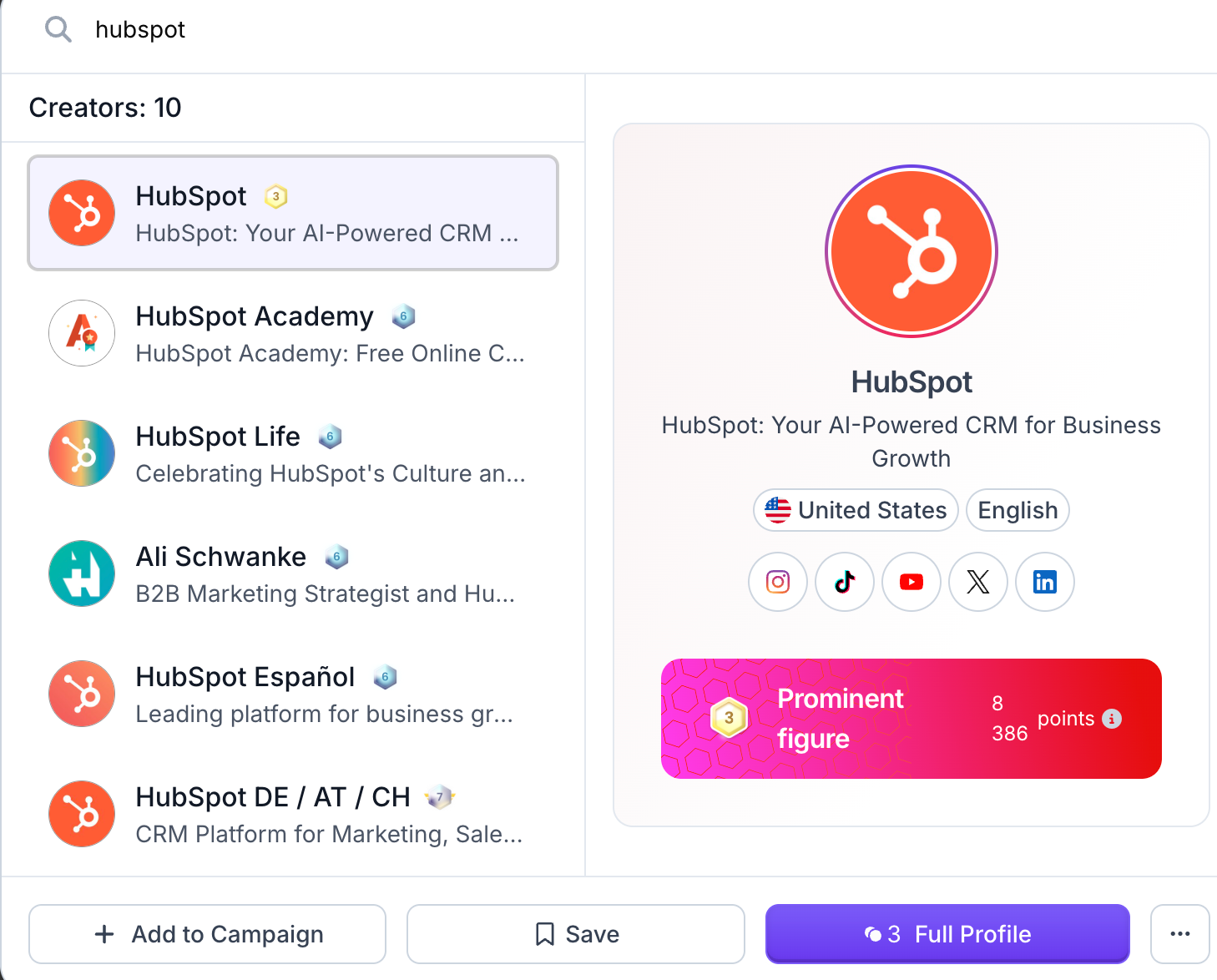
Then, you can click on “Full Profile” and select the tab for the platform you want to explore:

Then, you'll see a list of total collaborations on that platform, the specific brands and creators they did partnerships with, and links to the specific sponsored posts:

Alternatively, you can also manually search for competitors' campaigns on Google.
If you choose to use Google, here’s how you can find sponsorships:

You may need to try a few different variations of “sponsored by (brand),” like “#(brand)partner.”
For example, if HubSpot is my competitor, here are a few of the searches I’d do:


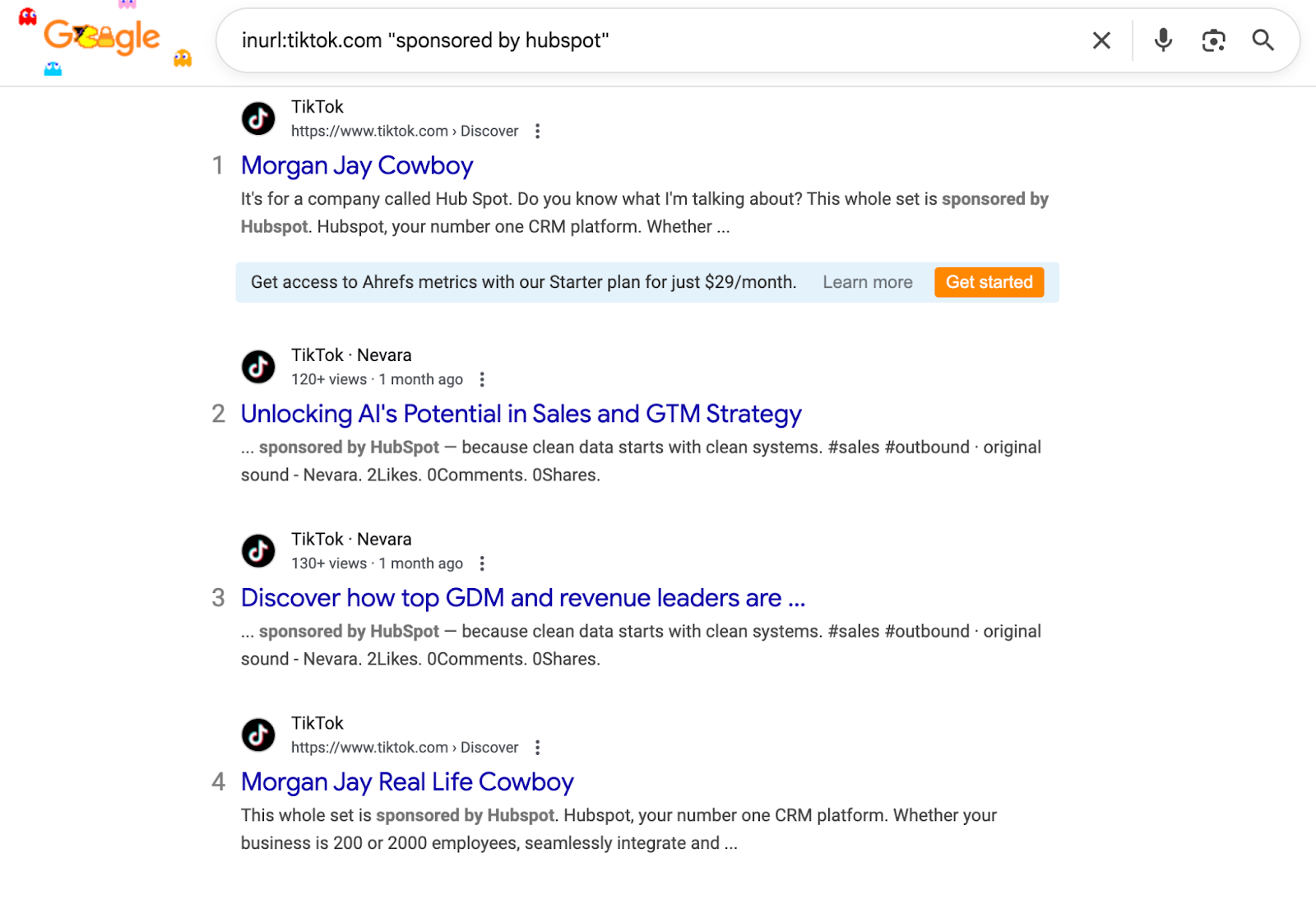
I find that Google is a good guide to understand generally which channels are popular among your competitors, though if you want a more sophisticated tool, Sponsorable will show you all of the competitors running podcast sponsorships:

There’s also a tool called SponosorGap that shows you a list of brands sponsoring newsletters:

Which channels are your top performers?
Next, look at your organic and paid channels. Which ones drive the most revenue?
I specify “revenue” because you may be getting more total customers from a channel like TikTok. However, if all of your enterprise customers come from LinkedIn, LinkedIn may be your top performing channel from a revenue standpoint.
Comparing The Best Channels For B2B Influencer Marketing
Now that you know which channels are relevant to your audience, let’s get into the nuances of the unique pros and cons of each channel.
LinkedIn is one of the most promising emerging influencer marketing channels for B2B, as it has a high concentration of executive decision-makers.
Even if most LinkedIn posts don’t earn as much engagement volume as other channels, like Instagram and TikTok, LinkedIn tends to drive significant revenue for brands selling enterprise products to decision makers.
For example, Ash Turner of Synthesia mentioned that while Synthesia’s TikTok videos earn millions of views, LinkedIn remains the platform they primarily focus on because it drives the most revenue, thanks to the high concentration of key decision-makers at enterprise brands.

“I would say maybe 90%, maybe 85 to 90% of our activations currently live on LinkedIn just because our core ICP is typically on LinkedIn.” – Ash Turner, Influencer Marketing at Synthesia
Another benefit of LinkedIn is that you can gain a deeper understanding of a creator’s audience by reading the titles of the commenters.
For example, suppose you only want to target demand gen marketers. In that case, you can look through a creator’s recent posts and see approximately how many people commenting on the posts are demand gen marketers.

LinkedIn is also excellent for promoting products that automate systems and processes.
For example, YouTube and video-based social platforms are great if people use your product to execute a specific process.
However, if you have a product that executes a task for you (i.e., an automation-based product where there is no process to use it), you won’t create content that illustrates how to use the product.
Instead, the objections to automation-based products are:
- Does it work as well as advertised?
- Is it better than competitors?
To resolve these objections, you usually just need data and trust.
LinkedIn influencer marketing is excellent for resolving these objections, as creators can use the product and then post data from their experience, illustrating:
- How well it worked
- The time and money saved
For example, Vector is a LinkedIn ads tool that de-anonymizes traffic.
Mason Cosby did a partnership with Vector, and he illustrated exactly how the tool performed compared to a competitor’s tool.

While you don’t always need to do a direct competitor comparison, the point is that LinkedIn is excellent for illustrating the value of your product with data.
However, like every platform, LinkedIn also has its flaws.
The biggest drawbacks of LinkedIn are the frequent algorithm fluctuations and abundance of fake followers and engagement.
For example, Sarah Adam of Wix no longer runs influencer partnerships on LinkedIn because many of the creators have fake followers

The good news is that there’s an easy method to weed out creators with fake followers and engagement.
Simply check the creator’s authenticity score in Favikon.
The authenticity score evaluates a creator’s:
- Expertise
- Follower Count
- Engagement Quality
- Content Originality
- AI Content

Pricing
LinkedIn influencer marketing costs vary, but Madhav Bhandari of Storylane shared that you can expect costs to range from about $500 to $2,000 per post:

If you want more help estimating costs, you can use Favikon’s free pricing calculator, which provides an estimate of a creator’s cost per post based on verified pricing data from over 130 creators.
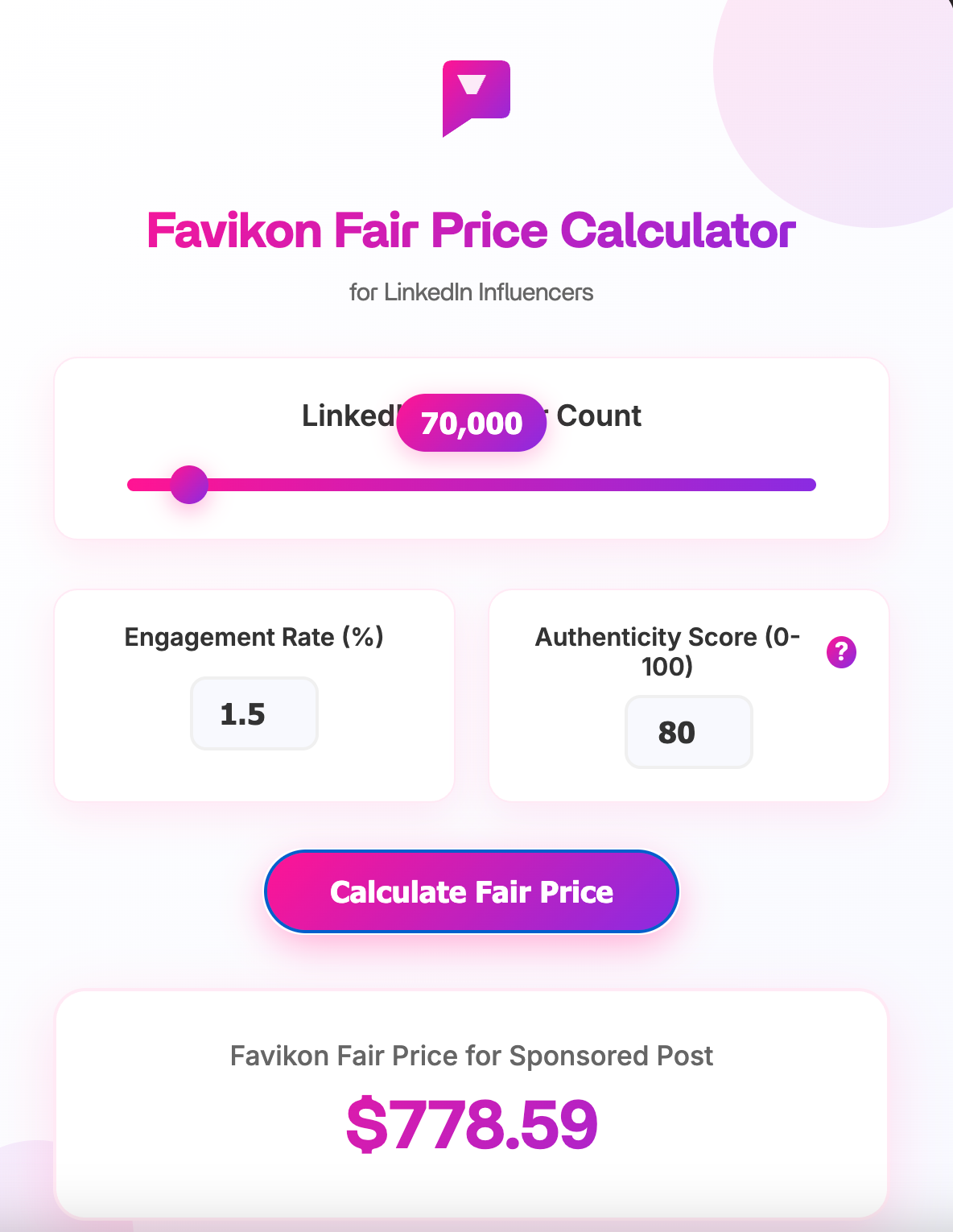

YouTube
YouTube is unique among other influencer marketing platforms as it’s the second-largest search engine in the world.
Therefore, your content can continue to generate sales weeks, even months, after the initial launch.
In fact, Igor Gorbenko, the influencer marketing manager at Ahrefs, noted that they frequently see sponsored YouTube videos continue to generate sales months after the initial video is published.

Additionally, your content can rank for specific keywords, like “best X tools,” “how to do (pain point your product solves),” and “(software) review.”
Hootsuite has also run several campaigns like this:

YouTube creators also tend to have deep trust with their audience because:
- Video Length: YouTube videos are often longer than standard short form videos. In turn, YouTube creators often have deeper trust with their audience.
- Visual and Auditory Content: When you can see and hear a person, you tend to trust them much more quickly than if you only read what they write or listen to them speak.
YouTube content is excellent for marketing products used to execute step-by-step processes (think tutorial-style content).
For example, an influencer marketing platform like Favikon is an excellent candidate for YouTube content, because people use the product to execute tasks, like discovering creators, reaching out to them, and analyzing competitors.
Another benefit of YouTube as an influencer platform is that you can repurpose the content into short form clips.
“The beauty of YouTube lies in its versatility,” says Kristen Sesto, the founder of B2B influencer marketing agency, Custom Influence.
For example, she orchestrated a partnership for MasterControl with The Medical Futurist and she negotiated the rights to repurpose it across multiple platforms.

The downside of YouTube is that it tends to attract a beginner style audience. This isn’t always true, but it is a trend.
That said, if you offer a prosumer, DIY, or low cost tool, YouTube can be an excellent channel.
Another drawback of YouTube for B2B brands is that it’s often the most expensive platform relative to other social media platforms, as long-form videos simply tend to require more effort to film and edit.
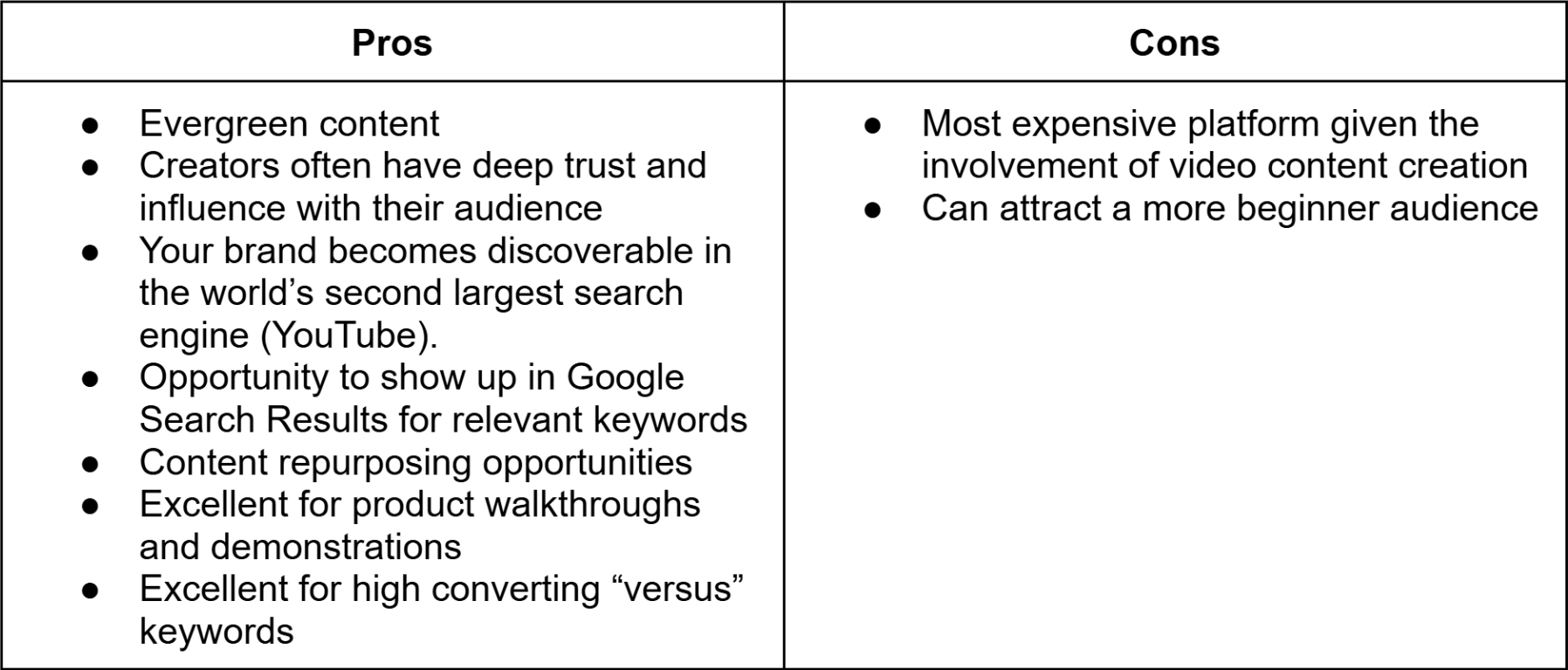
Pricing
Brandon Pourmorady of Adhesive Media (a YouTube influencer marketing agency) shared the following YouTube pricing data:
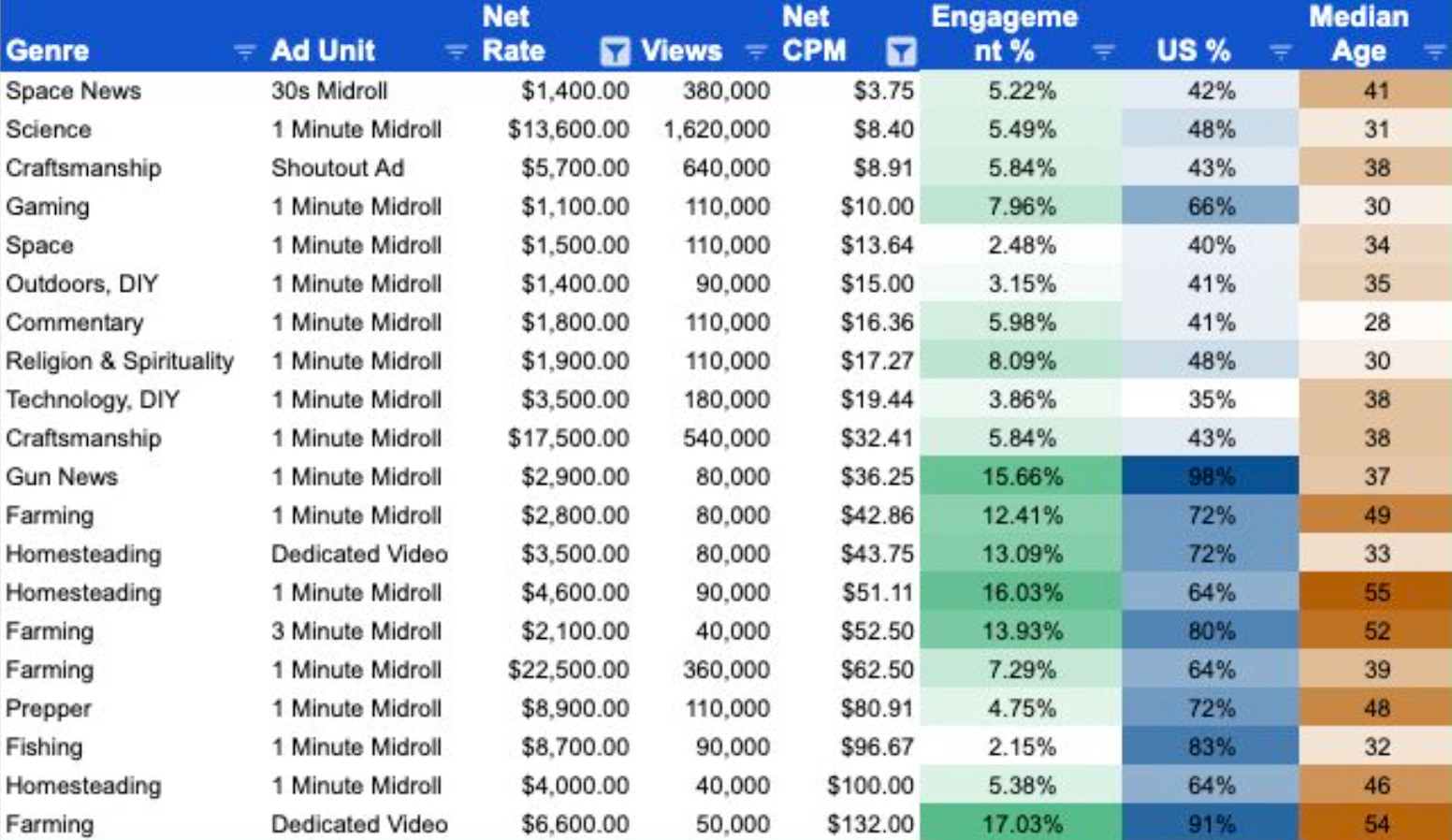
He also shared the following context of what impacts a video’s price:
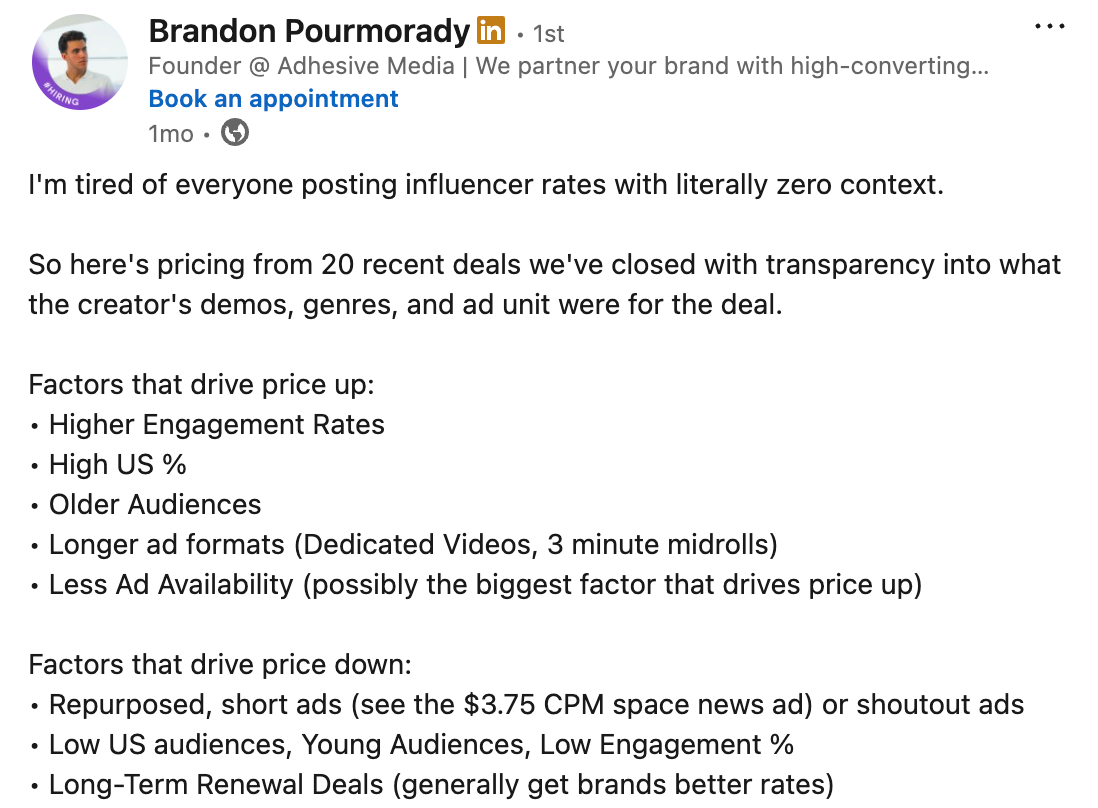
While Brandon works with a mix of B2B and B2C brands, Sarah Adam runs influencer marketing at Wix and shared the following pricing data for a dedicated video of Wix products:

X
X is still a relatively immature social media platform for influencer collaborations, due to its controversial stigma, which tends to make it less “brand safe.”
Additionally, the creators on the platform with substantial followings tend to have more provocative viewpoints.
However, it does still have a high concentration of wealthy and successful entrepreneurs.

Newsletters
When I asked influencer marketers which channels performed best for them, some claimed newsletters drove very effective results.
Kristen Sesto of Custom Influence said that newsletters have been one of their top performing channels for clients:

Nicole Ponce, who leads influencer marketing at Semrush, also believes that newsletter sponsorship investments will grow in the coming years.
This is partly because Google and LLMs are shifting their algorithms to show more thought leadership content and favor brands mentioned by thought leaders. Therefore, newsletters published on crawlable, third party sites (e.g., Beehiiv and Substack websites), can potentially boost a brand’s visibility in LLMs and Google.

Nicole also confirmed that newsletters have driven significant results for Semrush.
Another benefit of newsletters is that it’s very easy to track results, as there’s a clickable link.
However, the challenging aspect of newsletters is that there’s very little insight into audience quality and engagement with newsletters.
Sure, you can ask a creator for subscriber counts, open rates, and click through rates, but it’s one of the only influencer marketing channels where you can’t directly read through audience comments to gauge:
- How much they trust the creator.
- How many decision makers read the newsletter.
In fact, Igor Gorbenko of Ahrefs found newsletters drove underwhelming results.

Therefore, newsletters are more of a wild card, but they can still be worth testing.
If you’re considering testing newsletters, here are some benchmark metrics that Kristen Sesto of Custom Influence recommends:


Pricing
The Newsletter Newsletter released the following pricing data:

You can read the full post if you’re interested in learning more about how much to budget for newsletter sponsorships.
Podcasts
Very few influencer marketers I spoke with were investing heavily in podcasts, because the clear drawback is that you can’t demonstrate how a product or feature works.

Additionally, most listeners are usually doing something else (e.g., working out, driving, etc.) while listening to podcasts, so they aren’t in a position to take action when they hear the ad.
Therefore, podcasts are primarily designed to generate general brand awareness.
However, the unique benefit of podcasts is the depth of the relationship the creator builds with their audience. Most people spend hours listening to their favorite podcast hosts, so it can be a highly effective channel if:
- You’re selling a product in a red ocean where most products are similar.
- Your product requires high trust (e.g., cybersecurity platform, large marketing agency contracts, etc.).
While not a B2B brand, the protein powder market is a red ocean and protein brand Momentous struggled to take off in its first few years in business.
Yet after locking in a sponsorship deal with Andrew Huberman, the business grew by 20x, and it was thanks to the authenticity and trust Huberman had with his audience that allowed Momentous to stand out in the red ocean.
Rob Dyrdek, an investor in Momentous, discussed the deal at length on the My First Million podcast:

So if your product is in a competitive market or requires deep trust, podcasts can be an effective growth channel.

Pricing
If you’re wondering how much podcast advertising costs, here are some estimations from Eric Melchor, the founder of B2BPodPros (a B2B podcast sponsorship agency):
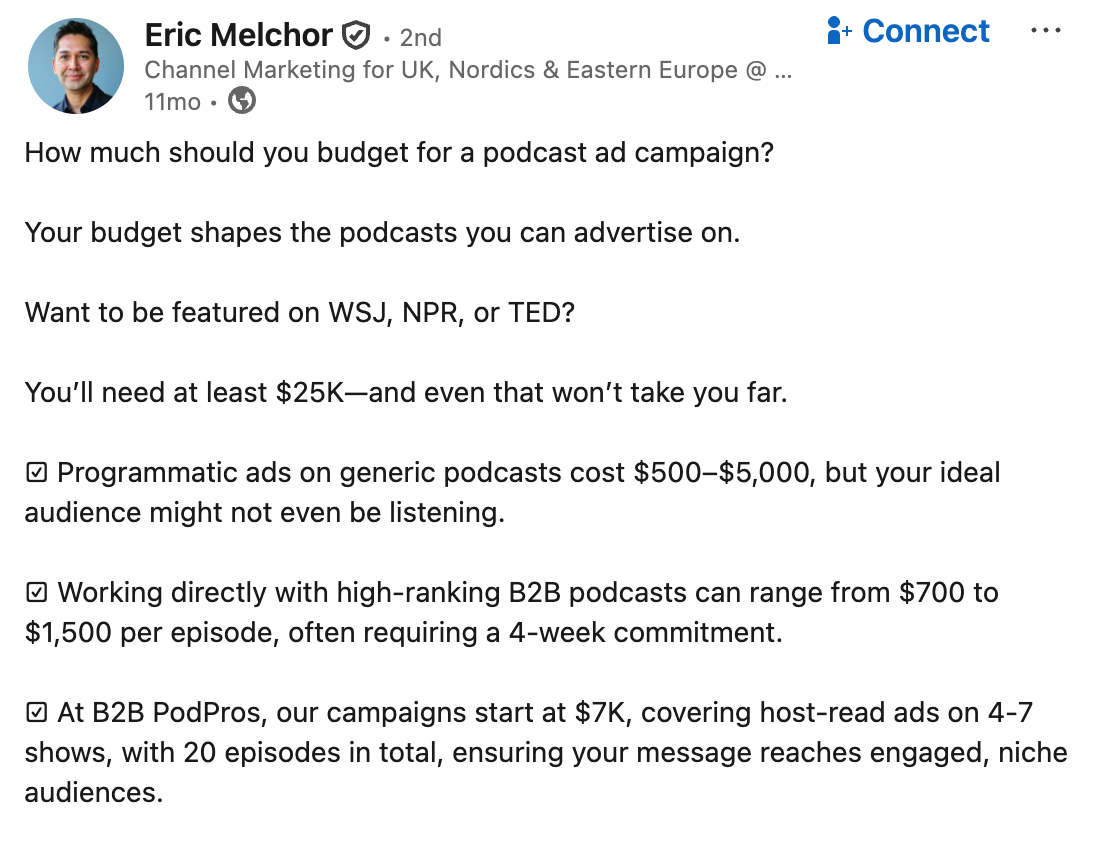
Instagram is one of the least relevant B2B platforms because it primarily caters to a consumer-based audience.
This is because the content that performs well on Instagram is mainly visual and entertainment-based video clips and pictures.
Therefore, creators don’t necessarily have deep trust with their audience. As trust is often a critical factor in most B2B purchase decisions, this makes Instagram a less effective B2B platform.
However, if you sell visually interesting products (e.g., a product for designers).
Additionally, if you have a large corporation (e.g., Salesforce, HubSpot) and simply want to take an omnichannel approach, Instagram can be another channel to achieve that goal.

TikTok
TikTok has similar drawbacks to Instagram, as creators often lack sufficient trust with their audience to convert B2B buyers, and it isn’t a platform on which B2B buyers typically make purchase decisions.
Christina Pearo, who runs social media and influencer marketing at Slate, acknowledged that B2B buyers do exist on TikTok, but it isn’t the platform they use to discover B2B products and make purchase decisions.

However, the benefit of TikTok over other social media platforms is that it’s much more likely for a video to go viral. Therefore, you can hire a UGC creator with limited reach and the video could still perform well.
Therefore, it can still be effective for generating brand awareness and it can sell lower cost products.

What’s The Best Influencer Marketing Channel For Your Brand?
Christina from Slate provided this advice:
“Hone in on one or two platforms that really make sense for your ICP and then expand from there.”
However, she stresses that it’s important to master one platform before expanding.
“Pick a platform and master it and then start going into other platforms. Especially if you're a smaller team, it's more important to master one or two platforms rather than spreading yourself thin and not mastering any platform.”
So start by looking at where your competitors are running sponsorships and where your customers currently exist.
If you need help tracking your competitor’s sponsorships and discovering creators, consider trying Favikon. You can also save creators, execute outreach, and manage the entire campaign directly inside the dashboard.
Related Articles
See all the articlesResources




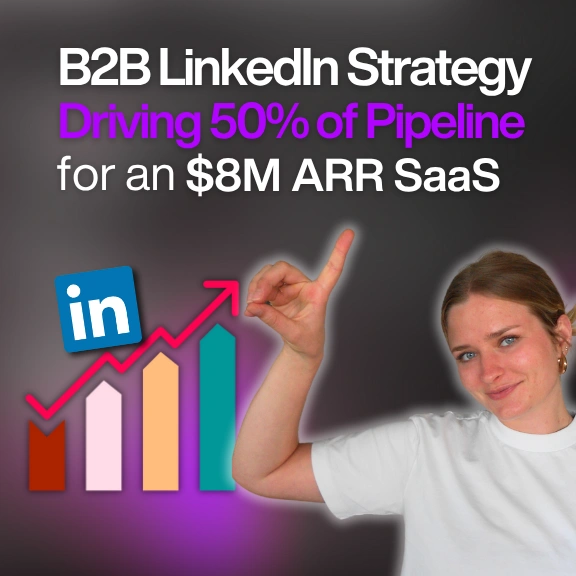
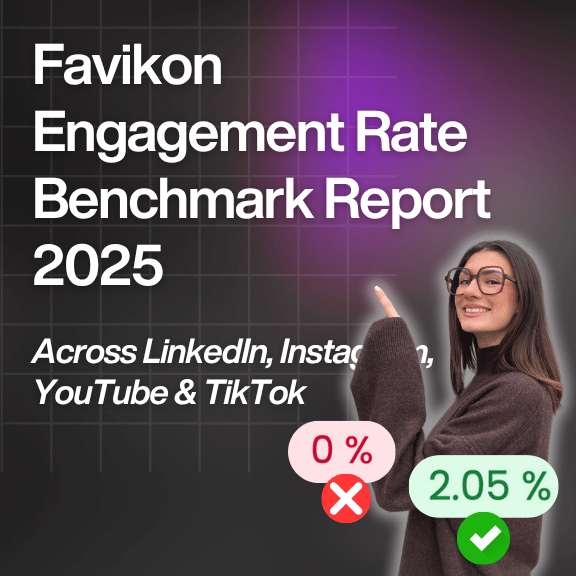


.webp)



.png)

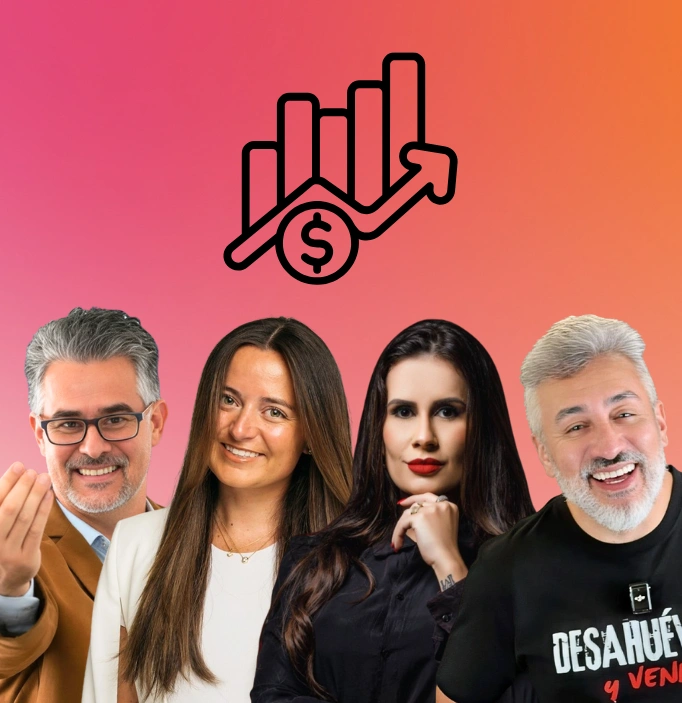
.png)
